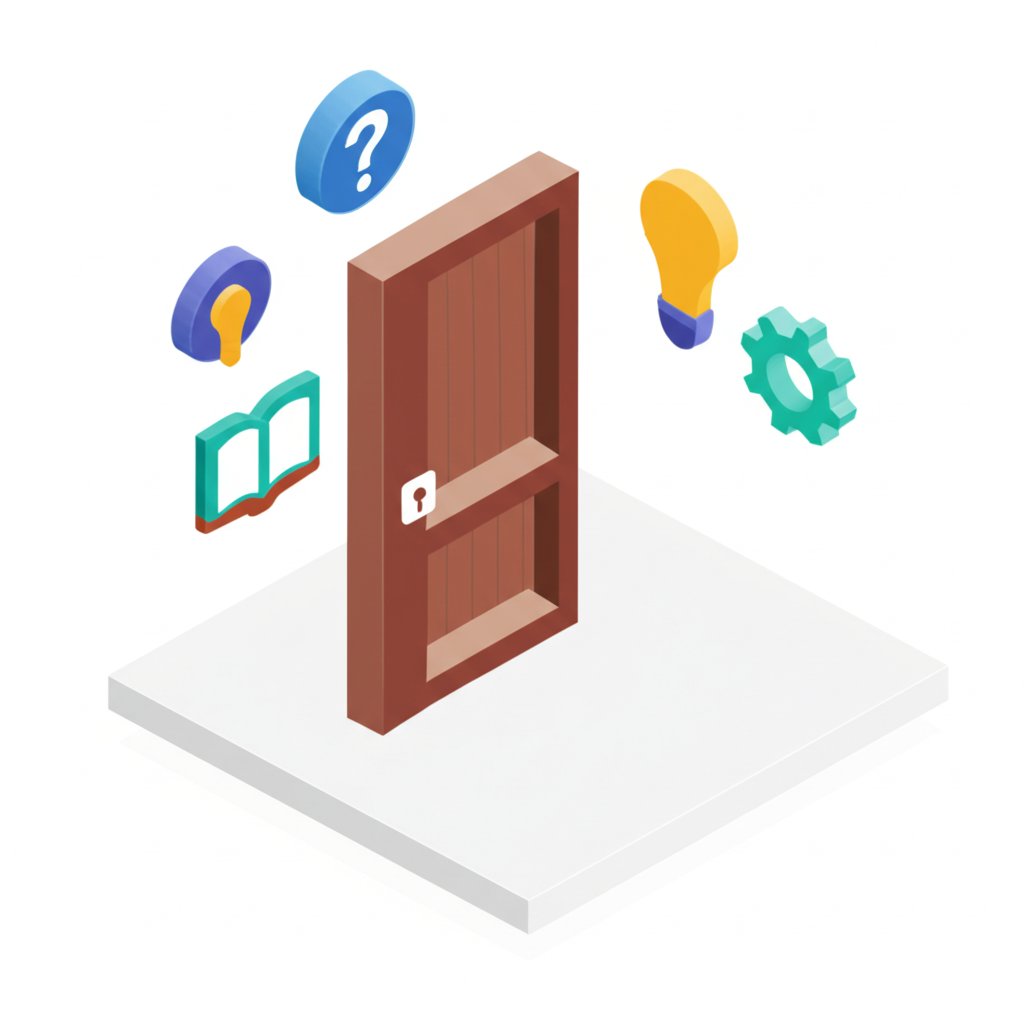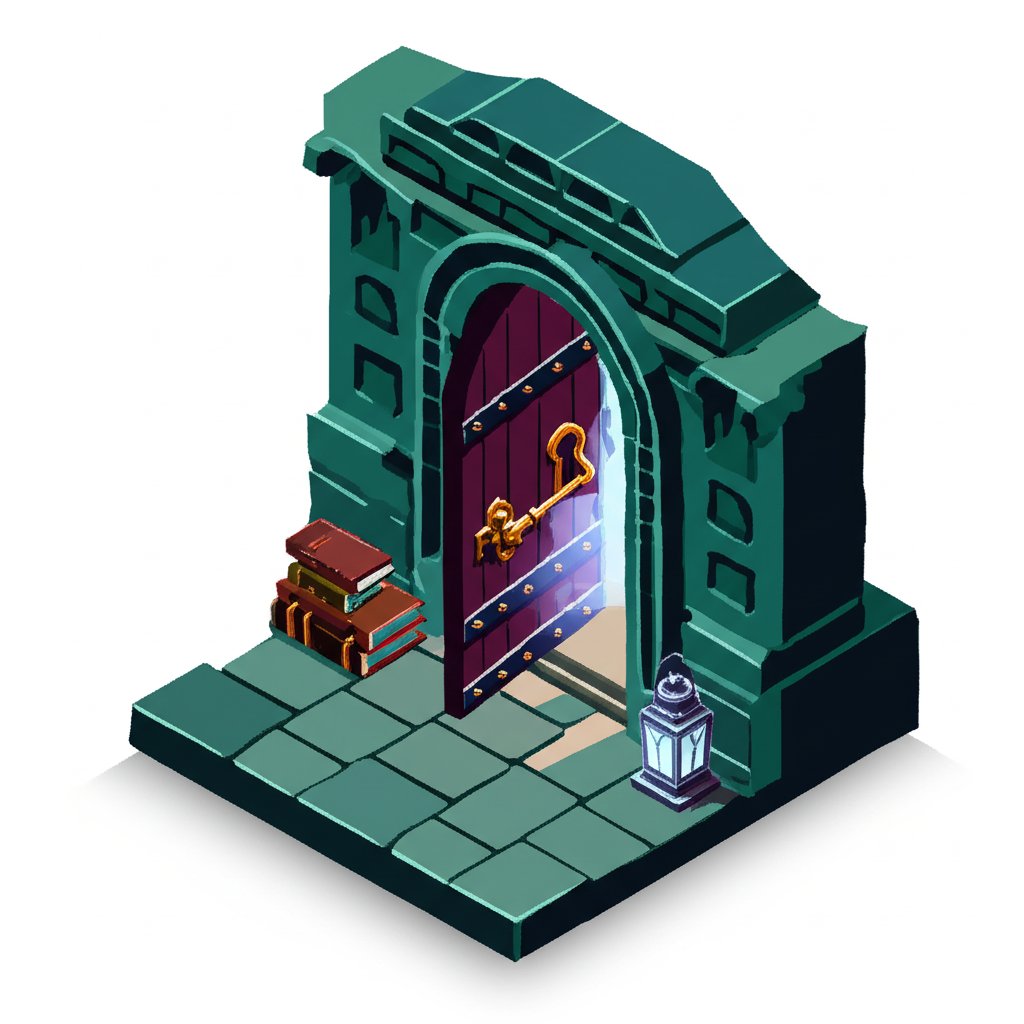We pass through countless doors every day, barely giving them a second thought. They are ubiquitous, silent guardians of our homes and the gateways to new experiences. But what if we told you these seemingly ordinary objects are packed with extraordinary stories, ancient secrets, and incredible engineering feats? Get ready to step through the threshold of knowledge as we reveal mind-blowing door facts that will change the way you view every entryway. From the dawn of civilization to futuristic innovations, we’re diving deep into the fascinating history of doors, uncovering captivating door trivia, and sharing truly fun facts about doors that make them much more than just a barrier.
The Ancient History of Doors: From Primitive Barriers to Grand Entrances
The journey of the door is a testament to human ingenuity, adapting and evolving with our needs for security, privacy, and shelter. Its history of doors stretches back further than you might imagine.
Humanity’s First Doorways: Prehistoric Innovations
Before solid wood or metal, early humans improvised. The very first doors were likely nothing more than animal hides or woven plant materials, draped across cave openings or simple shelters. These rudimentary barriers offered protection from the elements, wild animals, and unwelcome intruders.
But when did the first structure resembling a modern door emerge? The oldest wooden door ever discovered is a staggering over 5,000 years old! Unearthed in Switzerland, this incredible artifact dates back to around 3600 BC – a full thousand years before the Great Pyramids of Giza were built. These early door facts highlight our ancient, persistent need for defined entry points.
Doors in Ancient Civilizations: Symbolism and Engineering
As civilizations flourished, so did the complexity and significance of doors.
- Ancient Egypt: Doors were not just functional in ancient Egypt; they were imbued with profound spiritual meaning. Grand doors adorned temples and tombs, often meticulously decorated with intricate carvings and hieroglyphs. These weren’t mere entryways; they were believed to guard sacred spaces and facilitate the passage of spirits into the afterlife. The concept of “false doors” in tombs, leading to nowhere, epitomized this spiritual connection, providing a symbolic portal for the deceased’s Ka (life force) to interact with the living.
- Mesopotamia: Evidence suggests early forms of hinges, made from stone or wood pivots, were used in Mesopotamia as far back as 1600 BCE, demonstrating an early understanding of mechanical movement in doors.
- Ancient Rome: The Romans, masters of engineering, significantly advanced door design. They innovated with hinged doors that swung open and outward, and even pioneered sliding doors for their opulent villas. One of the most astounding facts about doors from this era can be seen at the Pantheon in Rome, which boasts massive bronze doors that are nearly 2,000 years old. These original doors still operate daily, a testament to Roman craftsmanship. The Roman god Janus, depicted with two faces looking to the past and future, was the deity of gates, doorways, beginnings, and endings, highlighting the profound symbolic role doors played in their culture.
Medieval and Modern History of Doors: Evolution of Form and Function
The Middle Ages saw doors take on a new emphasis on defense. Castles and fortresses featured immense, reinforced wooden doors, often fronted by portcullises and protected by drawbridges. These complex entry systems were vital for security.
As time progressed, doors became more than just barriers. The oldest door in Britain, found at Westminster Abbey in London, is over 950 years old and remains a functional part of the building – a remarkable piece of door trivia! From heavy, fortified gates, doors gradually evolved to display intricate joinery, decorative ironwork, and eventually, the lighter, more refined designs we recognize today, blending security with aesthetics.
Beyond the Hinge: Decoding Door Facts and Their Diverse Designs

Not all doors are created equal. The diversity of their design and function reveals ingenious solutions to various architectural, practical, and environmental challenges. Let’s delve into some fascinating door facts about their types and innovations.
The Anatomy of an Entryway: Basic Door Types
- Swinging Doors: The most common variety, swinging doors are hinged on one side and pivot inward or outward. They are the staple of residential and commercial buildings, providing privacy and basic security.
- Sliding Doors: Ideal for spaces where a swinging door would obstruct movement or furniture, sliding doors move along a track. They are frequently found in closets, as patio entrances, or as room dividers.
- Pocket Doors: An even more space-efficient variation of the sliding door, pocket doors disappear completely into a specially constructed cavity within the wall when opened, offering a sleek, minimalist aesthetic.
Ingenious Door Innovations: Revolving, Overhead, and Secret Doors
Humanity’s drive for efficiency and intrigue has led to some truly clever door designs.
- Revolving Doors: Invented in 1888 by American Theophilus Van Kannel, the revolving door was a brilliant solution to a common problem: preventing drafts. By creating a continuous seal, revolving doors allow people to enter and exit without letting large gusts of cold (or hot) air rush into the building, significantly improving energy efficiency. A colossal example is the revolving door at the Wells Fargo Center in Denver, Colorado, which measures an impressive 21 feet in diameter. This is a remarkable piece of door trivia that showcases innovative engineering.
- Overhead Doors: The modern overhead garage door, a marvel of convenience, was invented by C. G. Johnson in 1921. Just five years later, he introduced the first automatic garage door opener. These doors are often the largest moving objects on any home and can exert considerable force, making safety features crucial.
- False Doors: Beyond their ancient Egyptian spiritual use, false doors have a more whimsical place in history. The infamous Winchester Mystery House in San Jose, California, for instance, is replete with doors that lead to blank walls or sudden drops, adding to its mysterious lore.
- Secret Doors: From medieval castles hiding escape routes or treasure chambers to modern homes featuring hidden studies behind bookshelves, secret doors embody a timeless fascination with concealed passages. They remain a popular design element, adding a touch of mystery and practicality.
Doors in Nature: Facts About Doors in the Animal Kingdom
Humans aren’t the only ones who build doors! The natural world offers fascinating examples of creatures utilizing door-like structures.
- Trapdoor Spiders: These master architects dig burrows and construct a perfectly camouflaged lid, or “trapdoor,” made of soil and silk. This ingenious door keeps them hidden from predators and allows them to ambush unsuspecting prey. It’s an incredible natural fact about doors showcasing adaptive engineering.
- Beavers: While not traditional doors, beavers design their lodges with secret underwater entrances, expertly hidden and protected from the elements and predators. These are, in essence, highly specialized access points designed for security and shelter.
Global Door Trivia: Cultural Significance, Symbolism, and Artistic Expression
Doors are more than just functional barriers; they are canvases for cultural expression, symbols of identity, and holders of deep societal meanings. Many fun facts about doors are rooted in global traditions.
The Language of Doors: Colors, Knockers, and Symbolic Meanings
Throughout history, doors have communicated messages and intentions.
- Colorful Doors of Ireland: One of the most cheerful fun facts about doors comes from Dublin, Ireland. Streets burst with vibrant red, blue, green, and yellow doors. Legend has it that this tradition began when Queen Victoria passed away, and residents were asked to paint their doors black in mourning. The spirited Irish, known for their lively nature, opted instead to paint their doors in a riot of bright hues, a subtle act of rebellion and a celebration of life.
- Symbolic Meanings: Across cultures, doors often symbolize hope, opportunity, transition, liberation, and new beginnings. An open door can signify welcome, while a closed one might represent protection or exclusion.
- Doorknobs and Knockers: These seemingly small components hold a rich history of doors and design. Before electric doorbells, decorative knockers, often sculpted into intricate animal heads or mythical figures, served to announce a visitor’s arrival. Doorknobs, from simple brass spheres to ornate levers, have evolved as both practical and aesthetic elements, connecting us to that ancient Roman idea of Janus, the god of thresholds. In Chinese culture, a red door can symbolize welcome, good fortune, and protection, often aligned with Feng Shui principles to invite prosperity into the home.
Dreaming of Doors: Psychological Door Facts
Even in our subconscious, doors hold powerful significance. Psychologically, doors in dreams often represent choices, opportunities, or barriers in waking life. A wide-open door might symbolize a new path or invitation, while a locked door could suggest missed chances or feeling blocked. These intriguing facts about doors delve into our deeper connection with these everyday objects.
Doors in Popular Culture: Fun Facts About Doors in Media
The symbolic weight of doors extends into art, literature, and music. The legendary rock band “The Doors” famously took their name from Aldous Huxley’s book The Doors of Perception, which explores altered states of consciousness, further cementing the door as a metaphor for unlocking new realities or insights. Doors also serve as crucial narrative devices, opening worlds, concealing secrets, or marking critical turning points in countless stories.
Mind-Blowing Records & Fun Facts About Doors Around the World

Prepare to be amazed by these colossal and groundbreaking door trivia entries that push the boundaries of engineering and scale!
The Titans of Entryways: Tallest and Heaviest Doors
Some doors are so monumental, they redefine what an entryway can be.
- The Tallest Doors in the World: The ultimate super-sized door fact belongs to NASA’s Vehicle Assembly Building (VAB) at the Kennedy Space Center in Florida. These aren’t just big; they’re astronomical. Standing an incredible 456 feet (139 meters) tall – significantly taller than the Statue of Liberty – these colossal doors were built to allow rockets to be moved in and out in an upright position. Each door takes approximately 45 minutes to open or close completely. Imagine the patience required!
- The Heaviest Doors Ever Built: While the VAB doors are unmatched in height, others compete for sheer mass. The vault doors of high-security banks are engineered to withstand extreme force, often weighing many tons of solid steel. Historically, the grand temple doors of ancient civilizations were sometimes fashioned from solid stone or thick, heavy metals, requiring immense effort or complex mechanisms to operate.
- The Broadest Doors: The Kansai International Airport in Japan features doors that measure 90 meters wide and 72 meters high, composed of four panels, each weighing around 1,300 tons. These enormous doors are designed to endure the powerful winds and typhoons prevalent in the region.
Door Trivia in Extreme Environments
Doors aren’t confined to buildings; they’re critical components in diverse environments.
- Automobile Doors: From the everyday car door to exotic “gull-wing” doors that open upwards or “suicide doors” that hinge at the rear, vehicle doors prioritize passenger safety and access.
- Aircraft Doors: Designed to withstand extreme pressure differences at high altitudes, aircraft doors are meticulously engineered, featuring complex sealing mechanisms to maintain cabin integrity.
- Ship Doors: On ships, doors are often called “hatches” or “bulkhead doors.” They are vital for compartmentalizing the vessel, allowing sections to be sealed off in emergencies like fire or flooding, and are a crucial part of maritime safety protocol. These are practical fun facts about doors showing their adaptability.
The Unseen Influence: How Doors Shape Our Daily Lives and Future
Beyond their grand history and record-breaking dimensions, doors play fundamental, often unacknowledged, roles in our daily comfort, safety, and even the planet’s health.
Essential Functions: Security, Privacy, and Climate Control
- Guardians of Security and Privacy: The most fundamental function of a door is to provide security. A robust, locked door is our first line of defense against intruders, safeguarding our homes and businesses. Inside, doors grant us the cherished privacy needed for personal spaces like bedrooms and bathrooms. These basic facts about doors underscore their importance for peace of mind.
- Silent Energy Savers: A well-designed and properly sealed door can be a significant ally in energy conservation. It acts as an insulator, preventing warm air from escaping in winter and cool air from seeping out in summer. Studies show that old, inefficient doors can account for up to 25% of a home’s heat loss, making modern, energy-efficient doors crucial for reducing utility bills and environmental impact.
Sound Barriers and Accessibility: Modern Door Facts
- Acoustic Control: Doors are excellent at managing sound. A solid-core door can significantly reduce noise pollution from outside, creating a quieter interior environment. Conversely, they also help contain sound within a room, allowing for privacy during conversations or focused work. It’s an easy fun fact about doors to observe in everyday life.
- Universal Accessibility: In modern design, doors are increasingly designed with accessibility in mind. Wider doorframes, automatic opening mechanisms, and easy-to-use lever handles are becoming standard, ensuring that buildings are navigable for everyone, regardless of mobility.
The Future of Entryways: Smart Doors and Beyond
The evolution of doors is far from over. With advancements in technology, the concept of a “smart door” is rapidly gaining traction. These intelligent entryways integrate with home automation systems, offering features like:
- Biometric Scanners: Fingerprint or facial recognition for keyless entry.
- App Control: Remotely locking/unlocking doors, granting temporary access to visitors.
- Integrated Cameras and Sensors: Enhanced security, sending alerts for unexpected activity.
- Sustainable Materials: Continued innovation in eco-friendly and durable materials will shape future door design.
These futuristic facts about doors show how technology is continually enhancing their functionality, security, and convenience, making them even more integral to our connected lives.
Conclusion: Don’t Just Walk Through, Look at the Door!
Who would have thought that such an everyday object could hold so many incredible door facts and fascinating stories? From their humble beginnings as animal hides to the soaring heights of NASA’s Vehicle Assembly Building, the history of doors reflects humanity’s entire journey – our needs for security, privacy, and connection.
We’ve explored ancient engineering, cultural symbolism, quirky door trivia, and truly fun facts about doors from around the globe. The next time you encounter a door, take a moment. Appreciate its design, ponder its journey through history, and marvel at the unseen work it does every day. Doors are more than just entryways; they are silent witnesses to history, guardians of our most cherished spaces, and enduring symbols of opportunity. Keep exploring, and you’ll find wonders everywhere, even in the most ordinary things!
FAQ: Your Top Questions About Doors Answered!
Q1: What is the oldest door ever found?
A: The oldest wooden door discovered dates back to around 3600 BC (over 5,000 years old) and was found in Switzerland.
Q2: Who invented the revolving door and why?
A: The revolving door was invented by Theophilus Van Kannel in 1888. His primary goal was to prevent drafts from entering buildings, making them more energy-efficient and comfortable.
Q3: Why are some doors in Ireland so colorful?
A: Legend has it that the tradition of colorful doors in places like Dublin began when people were asked to paint their doors black after Queen Victoria’s death. Many lively Irish residents chose to express their spirit by painting their doors in bright, joyful colors instead.
Q4: What are the tallest doors in the world?
A: The tallest doors in the world are on the Vehicle Assembly Building (VAB) at NASA’s Kennedy Space Center in Florida, standing an incredible 456 feet (139 meters) tall.
Q5: Are there doors in the animal kingdom?
A: Yes! Trapdoor spiders construct ingeniously camouflaged “doors” of soil and silk to cover their burrows, providing protection and a hiding spot for ambushing prey. Beavers also create hidden underwater entrances to their lodges.
Q6: What is the largest revolving door?
A: The largest revolving door is located at the Wells Fargo Center in Denver, Colorado, measuring 21 feet in diameter.
Q7: What is the purpose of a “false door”?
A: In ancient Egypt, false doors were symbolic portals in tombs for the deceased’s spirit to interact with the living. In later history, they were often used in architecture (like the Winchester Mystery House) as decorative elements or to create intrigue.
Q8: How do doors contribute to energy saving?
A: Well-insulated doors with good seals prevent heat from escaping in winter and cool air from escaping in summer, reducing the workload on heating and air conditioning systems and leading to significant energy savings.
Q9: What does a door symbolize in dreams?
A: In dreams, a door often symbolizes choices, opportunities, or transitions in one’s life. An open door might represent new beginnings, while a locked door could signify missed opportunities or obstacles.
Q10: What is the significance of the Roman god Janus to doors?
A: Janus was the ancient Roman god of beginnings, endings, transitions, and gates. His two-faced depiction, looking to the past and future, perfectly symbolized the threshold a door represents, marking the transition between one state or space and another.










